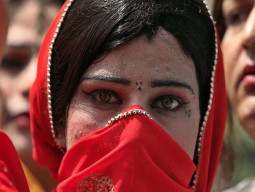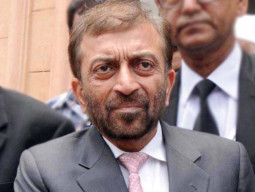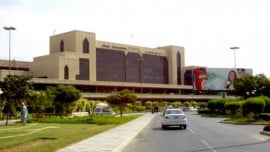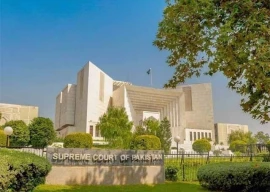
KARACHI: The census data for the country’s districts, sub-divisions and cantonment boards makes startling disclosures about headcounts in some localities of the city.
The Pakistan Bureau of Statistics (PBS) has released the data of the population of Khyber-Pakhtunkhwa's 71, Punjab's 145, Sindh's 138, Balochistan's 134 and FATA's 48 districts, sub-divisions and cantonment boards. The population of the sub-divisions of the six districts of Karachi has also been revealed, in which, Korangi's sub-division is the most populated at 1,071,560.
Ibrahim Hyderi’s population was recorded at 1,045,815, compared to its 1998 population of 438,921. Surprisingly, the populations of Manora, Aram Bagh and Saddar have decreased since the 1998 census, according to the PBS statistics. There has been a decline of 41.31% in the population of the Manora sub-division. The registered population in this sub-division as per the 1998 census was 10,008 while in the present year, the population decreased by 4,134, with a population of only 5,874 being counted. As per the 1998 census, the Aram Bagh sub-division had a population of 131,880 while in 2017 it decreased by 3,506 and dropped to 128,374. In the Saddar sub-division, the population was recorded at 42,187 in the 1998 census but in 2017, the population decreased by 5,721 reaching 36,366.
Sindh chief minister expresses reservations on census results
The Gulzar-e-Hijri sub-division witnessed the highest increase in population, where the total population rose by 539% - from 114,789 in 1998 to 734,252 in 2017. In Manghopir a 503% increase was recorded.
Faisal Cantonment Board is the only cantonment board in Karachi spread over three districts. Faisal Cantonment falls in districts Korangi, Malir and East, however, its population was recorded under the head of District East by the PBS. Principally, the population of the Faisal Cantonment Board should have been shared in the three districts.
According to experts, the decline in the population in important trade and residential areas like Saddar and Aram Bagh creates doubt on the veracity of the census process and its results. After the 1998 census, several residential buildings were constructed in these areas, thus making the population decline questionable.
Political parties such as the Pak Sarzameen Party, Pakistan Peoples Party (PPP) and Muttahida Qaumi Movement (MQM) - Pakistan have all expressed reservations over the results of the 2017 census. During a recent public gathering the MQM-Pakistan rejected the data and called for a fresh census to be conducted in a transparent manner. Similar demands have been made by other political leaders. Members of the provincial assembly bashed the census results during a recently-held session, calling for transparency in the process.
'Over 10 million Karachiites missing in census': MQM-P, PSP reject results
“No one heeded our reservations and recommendations in this exercise. We had suggested they provide us one copy of each block and update the REN form [census block summaries] on their website, but they refused,” said Chief Minister Murad Ali Shah during the assembly session. Murad has been a strong opponent of the census results and repeatedly called for the statistics to be publicised.
According to experts, the PBS has yet to share statistics on the number of families or settlements in the city. Such figures will corroborate the statistics shared by the bureau.
The PBS informed the Sindh High Court on Tuesday that the key principle followed in the 2017 census was that only officially notified boundaries of administrative units were used. It said that in the case of Karachi, the city limits had not been extended by the provincial government department since 1998, except for a few dehs (villages).
Information Minister Nasir Shah, however, said the delimitation is a lame excuse. “The population of Sindh, especially Karachi which is the capital of province, has deliberately been shown as less than it is,” he claimed, adding that many people from other provinces have shifted to Karachi, but its growth rate has been shown as less than Lahore.
“Not only have people from other provinces moved here, but a large number of people from rural Sindh have also shifted to Karachi, making it the largest city for Sindhi-speaking people,” Nasir said, adding that the PPP government has serious reservations over the census and the federal government must resolve them.





















































COMMENTS (2)
Comments are moderated and generally will be posted if they are on-topic and not abusive.
For more information, please see our Comments FAQ